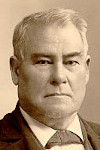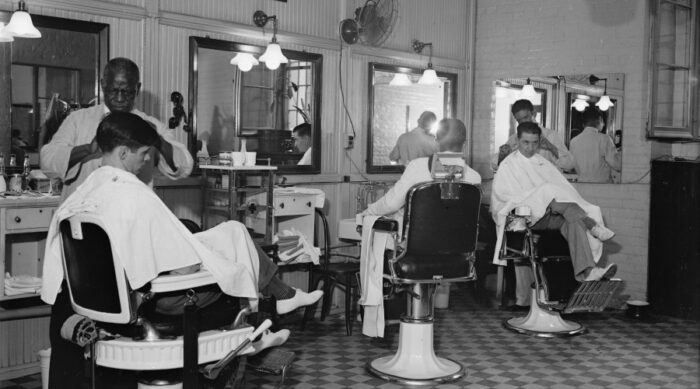
John H. Reagan
Last week, we looked at the original tubs in the subbasement of the Capitol, as well as their replacements in the basement level. Sadly, much of that information is based on conjecture, as the newsmen of the time do not seem to have spent any time investigating the hygienic habits of members of Congress in the early days. Fortunately, that would change after the death of Henry Wilson, and so, starting around 1880, there was a steady flow of stories explaining to the wider audience what went on behind marble walls in the Capitol.
One of the earliest articles came from the Washington Evening Star, and while it is mainly trying to get to the bottom of a story going around that Senators do not have to pay to be shaved, while Representatives do, it also mentions that the bathing rooms, indicating that both houses have their own separate facilities, and that the Senate has had a barber shop attached since 1862. The reason for the price discrepancy is that the attendant on the Senate side is also required to be a barber, and can therefore also tend to Senators’s whiskers.
The most comprehensive article related to the tubs was published in the Wheeler West Virginia, Daily Intelligencer in 1887. It was written by John S. Shriver, who, about ten years later, would be the center of one of the first fights over whether journalists have to reveal their sources.
The precipitating event for the article was that Congressman John H. Reagan (that’s him, above) had failed to appear for a vote on a tariff due to his taking a bath, which meant that the vote had not gone his way. There was much written about this, including a poem written by the poet of The Critic magazine, and now Shriver wanted to tell all about the baths, as well.
Most interesting in the article was that the House bath room had moved from the crypt level back to the subbasement about eight years earlier. Since one of the tubs is described as a “gigantic marble bath tub,” which “occupies one side of the room, and will accommodate the largest congressman with ease,” it stands to reason that this was one of the original tubs. There are other tubs there, as well including a smaller marble tub and a number of porcelain and zinc-lined wooden tubs. It was, however, the marble tubs that were of the greatest interest, and, at times, there would be an hour wait for one. There was even some talk of importing more tubs of this sort.

The Senate side was quite different, mainly in that it was much less opulent. The tubs were zinc-lined wood, and some Senators would go over the House side for their ablutions in a marble tub. The biggest difference, however, was that the House side could be used by not only congressmen and those who worked for them, but guests as well.
Around 1900, it was decided that the old baths would not do, and, over the next few years, both House and later Senate baths were modernized. These new institutions did not last long, however, as, in 1913, the $10,000 keeping the baths running was considered excessive and they were shut down. The Senate barber shop, however, continued to operate out of the space for many years. Today, the room is the Senate Wives’s Reception Room. On the House side, the crypt-level bath room is today part of the restaurant. What the subbasement bath is used for is uncertain.
Next week: The bathtubs are rediscovered.
